Enjoy reading our interview with Bestselling Author Helene Stapinski.
Helene talks about researching and writing her intriguing memoir, Murder in Matera, which traces a sensational family crime from 19th century Southern Italy.
About the Author Helene Stapinksi
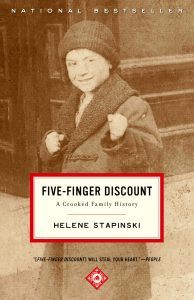
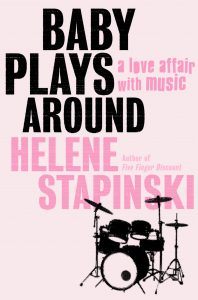
I’m a memoirist and New York Times, contributor. My third and latest book, Murder in Matera: A True Story of Passion, Family, and Forgiveness in Southern Italy is a story about a sensational family crime I uncovered that involved my great great grandparents in 19th century Basilicata, a little-known region on the arch of Italy’s boot. Since I was a young girl, I had heard of the legend of Vita and Francesco.
It took me ten years to find the details of their murder, traveling four times to the towns of Bernalda, Pisticci, and Matera, uncovering the grim feudal history of the region in the process. The story alternates between me taking you along to Italy and searching for the evidence, to flashbacks to the 19th century, describing the murder and what day to day life was like in Matera province, a mountainous land rife with criminals, superstitions, old-world customs, and desperate poverty.
Though false leads sent me down blind alleys, my search, aided by a few lucky, even miraculous, breaks and a group of colorful local characters, led me to the truth.
The family tales I’d heard were true; There had been a killing that roiled 1870s Italy. But the identities of the killer and victim weren’t who I thought they were. In revisiting events that happened more than a century before, I came to another stunning realization, I wasn’t who I thought I was, either.
Weaving my own story of discovery with the tragic tale of Vita’s life, Murder in Matera is a literary whodunit and a moving tale of self-discovery that brings into focus a long-ago tragedy in a little-known region remarkable for its stunning sunny beauty and dark buried secrets.
Murder in Matera is a prequel of sorts to Five-Finger Discount: A Crooked Family History, my first book from 2001, a national bestseller which traces my family’s criminal past in Jersey City, NJ. Murder in Matera starts in Jersey City, as I listen to my mother’s stories of Vita, and ends there as well, with Vita’s tragic death, after her immigration to the United States with her two young sons.
You can buy Murder in Matera on Amazon here.
For more info on Murder in Matera and Helene’s other books visit her website.
Q: What Inspires you to write?
My inspiration comes from the world around me and from my rich family history. When I was in graduate school in Columbia University’s MFA program, I realized that my family stories were so much more interesting than most of my classmates.
I had tried running away from my colorful New Jersey family, but they eventually provided the material for my books. I faced the family stories head on and made them my life’s work.
Q: How did you become involved with the subject or theme of your book?
I had mentioned the story of Vita in my first book Five-Finger Discount but didn’t know any of the details. After my second book was done, I decided to poke around in Southern Italy to see if I could find the first family crime story. I soon became obsessed and spent the next decade researching Vita’s story. It wasn’t until my last trip there two years ago that I actually found the 600-page criminal file detailing the family murder.
Q: What were your goals and intentions in this book, and how well do you feel you achieved them?
I set out to uncover the first family crime and to find out if the tradition of crime was genetic and passed down. I not only did that but went above and beyond, continuing my research into Vita’s life and uncovering several family secrets that we never even knew about. The story I thought I knew was so much more dramatic and in a way, heroic than I’d ever imagined. I also stumbled across secrets to our family identity, completely changing the way I view my family.
The story I thought I knew was so much more dramatic and in a way, heroic than I’d ever imagined. I also stumbled across secrets to our family identity, completely changing the way I view my family.
Q: What was the hardest part of writing this book?
Combining the historic with the memoir aspect of the story and weaving them together in a way that didn’t become a distraction. I wanted to make each section feed on and off the previous and later sections, to build a sense of tension and release. With the help of my editor, Julia Cheiffetz, I think I succeeded. The trick was to show what was happening in Vita’s life, not just tell about it from a detached perspective, using the historical facts, interviews, readings and family documents I found.
Q: What did you enjoy most about writing this book?
The best part was traveling to Italy four times, making friends there and getting to know the generous, open-hearted Lucanians. They welcomed me into their homes as if I was family. My real family members were very reluctant to talk to me and didn’t want the story of Vita made public. But I fell in love with the culture of Southern Italy, the landscape, the amazing food and the deep, rich history going back to its Greek and Roman roots.
Q: Give us an interesting fun fact about a character in your book.
My main character, Vita Gallitelli, my great great grandmother, was branded a puttana, or loose woman, in my family. The reality was that she, and most poor women in Basilicata, was forced to sleep with the landowner in order to stay alive. If a husband complained or resisted, he and his wife and family would starve to death.
Q: As a child, what did you want to do when you grew up?
I wanted to be a writer from the time I was around 4 or 5 years old. My family was filled with storytellers, including my mother, who first told me the tale of Vita. Some days, though, I wanted to be an astronaut. Or a forest ranger, so that I could move to the country or fly to the moon, far, far away from Jersey City.
Q: At what age did you start writing stories or books?
When I was 4 or 5, as soon as I started writing letters. I would write poems and stories and hide them in a small closet in the family living room. My mother was a clerk at the DMV and soon I was typing on her office typewriters and really churning out my material. At age 14 I wrote my first book in a series of marble notebooks; A Girl Named George, a loosely disguised story about my teenage angst-ridden life.
Q: What was your first book writing experience like?
My first real book was my thesis for the Columbia MFA program, a memoir of a year I spent working at a radio station in Nome, Alaska, up near Siberia. I spent two years at Columbia working on it, and probably another two editing and then trying to sell it. Most agents never even got back to me, but one liked my writing and asked if I had any other ideas. And that’s when Five-Finger Discount, my first published book, was born. I started collecting stories I’d written in class about my family.
Q: What kept you going…?
I applied to the Millay Colony for the Arts and banged out most of Five-Finger Discount there. When I returned my husband, an editor for a newspaper, read it and loved it and pushed me to submit it to agents. Gun-shy from my last experience with the Alaska book, I was reluctant to send it out. But with his encouragement, I did. And it sold in a weekend in a bidding war.
Q: How has your environment, family, and upbringing influenced your writing?
My environment, family, and upbringing ARE my writing. They make up my greatest material and are the reason for my fame and success.
Q: What writing courses/workshops/classes did you take? Can you recommend any specific writing books or classes for aspiring writers?
The Columbia MFA program helped me identify my voice and see how it was different from everyone’s around me. There was no strong, working class woman’s voice that I knew of, but I didn’t realize that until I went to Columbia. The teachers there, particularly Le Anne Schreiber and Luc Sante, helped me hone that voice and to find my narrative. Also, the Millay Colony for the Arts in upstate New York provided the space and nurturing to produce my first book.
Q: Are you a full-time or part-time writer?
Full-time. I’ve written three books of Creative Non-Fiction. I write a fortnightly column for the New York Times called Works in Progress. I also freelance and have written many travel, food, and pop culture stories. One of my latest stories, which traces the
lost footage of Marilyn Monroe and went viral worldwide, is being optioned for a major motion picture.
Q: How many books have you written so far?
Three. My first was Five-Finger Discount: A Crooked Family History, which traced my relatives’ criminal background and the history of the corrupt politics of Jersey City. That was followed by Baby Plays Around: A Love Affair with Music, which traces the years I spent as a drummer in a rock band on the Lower East Side of New York in the mid-1990s. The latest, Murder in Matera, looks at the first crime in my family from 19th century Southern Italy.
Q: What makes your writing special?
I have the voice of a working class woman. Tough, smart and straightforward. The New York Times called it “street-wise Hemingway.” There are lots of male working class writing voices but hardly any women. Women from that background tend to marry up and forget their roots. Also, I am a dogged reporter.
All my books are thoroughly researched, not just through archives and reading material, but through old-fashioned shoe leather. I get my information first hand and use it to weave my stories.
Q: What do you consider to be your best accomplishment?
My two children, Paulina, 13, and Dean 17, who are both amazing writers.
Q: What are your current projects?
I’m still writing my column for the New York Times and I’m teaching high school kids at the School of the New York Times this summer. I haven’t figured out what my next book project is yet, but I have a few ideas.
Q: What’s the strangest thing that you have ever had to research online or do for your book?
Travel to Southern Italy four times, once with my mother and small children, and the other times, on my own. Leading the charge into unknown territory was frightening at times, but eventually deeply rewarding.
Q: Do you ever suffer from writers-block? If so how do you overcome it?
No, thankfully, I have never had writers-block. I have the opposite problem: What should I cut?
Q: What’s your process of writing a story?
I do the reporting first and don’t start writing until that’s completely finished. Then I sit down and look at everything I have, highlight all the best elements, and then start writing. The organization comes organically. I don’t write an outline. Then I go back and edit. And edit again. And again. And again. Until I am happy with it. I’m lucky to have a husband who is an editor, who is always my first reader and tells me if what I have is any good.
Q: What’s your favorite environment for creativity and productivity?
My dining room table in my Brooklyn townhouse once everyone is at school and work. I write for several hours, then have lunch and then take my dog, Blue, an Australian Shepherd, for a walk in Prospect Park. It’s very woodsy and it relaxes me and gets my mind going. Then I come home and write a few more hours. Then make dinner for my family as they start arriving home. It’s my dream life.
My dining room is bright and sunny. The table is big enough for me to spread all my notebooks and research out. I write in my pajamas. Then after I take a shower, put on another pair of pajamas. I love not getting dressed for work.
Q: What is your work schedule like when you’re writing?
I start writing about 8 am when everyone leaves the house. I take a break at lunch, eat and then walk the dog for about 45 minutes. Then I come back and write a couple hours more. Sometimes I re-read what I’ve written in the morning, and make changes.
Q: Where do you sell your books?
In major bookstores.
Q: How is your experience working with your agent and publisher?
When I started out I got many rejections from agents. It was really depressing and there were times I thought of learning a new skill! My current agent is Lisa DiMona. She saw a story I published in the New York Times and reached out to me. I was in Southern Italy at the time on my third trip there. When I came back we had lunch and hit it off. There’s a joke in my family that all the women have a Mona Lisa smile. So when someone named Lisa DiMona got in touch, I naturally responded. It seems like our meeting was fated.
When I went to her office for the first time, I saw she had a Mona Lisa portrait on her wall. Coincidence? I think not. My publisher is Dey Street Books at HarperCollins. And my editor is Julia Cheiffetz. She liked my pitch for Murder in Matera and seemed to be the one who really “got it.” She is amazing to work with and is very wise and smart. She’s a close reader, and unlike my other editors on other books, did a very close line edit.
That was the first time I experienced that. I’m used to being edited since I write regularly for the New York Times, so I find it helpful to get that feedback. Working without an editor can be frustrating. It’s good to have feedback from someone you trust. I respond well to criticism and I work very fast.
Q: Have you been published in any magazines?
New York magazine, Travel & Leisure, The New York Times Magazine, Food & Wine, Columbia Journalism Review, Cosmopolitan, Good Housekeeping, among others.
Writing for the New York Times led directly to getting my new agent and certainly helped get a publisher. And the essays and pieces I’ve written since the last book was published, absolutely have sold books, and led to further publicity.
Q: How do you promote and market your books?
Through interviews set up by my publicist.
Q: What is your advice to Indie authors?
Just keep writing. And get someone you trust to read it.
Q: What are you really good at and love doing aside from writing?
I am a pretty good drummer. I am a really good cook. And I am a great mom and wife.
Q: What do you like to do when you’re not writing?
Take long walks with my dog, Blue. Watch movies with my family and eat big dinners that we cook together.
Q: What are your favorite books? What authors do you admire?
Truman Capote’s In Cold Blood, which I make reference to at the end of the first chapter of Murder in Matera. Mary Karr set the bar for literary non-fiction back in the 90s. She’s a hero.
I love Christ Stopped at Eboli by Carlo Levi. It was my Bible while writing Murder in Matera.
Q: If you were deserted on an island, which three people would you want to have with you and why?
My husband and two kids. But if not them, then Vita, my great great grandmother. I wrote about her at length in this new book but never met her, since she died in 1915. I have a feeling we would hit it off.
Q: What would you do if you weren’t a writer?
Be a cultural anthropologist.
Q: What do you love best about an authors’ lifestyle and being an author?
The freedom it gives you to create something that’s never been created before and to connect with the readers in the world around you.
Q: What are your big dreams and goals?
Just to keep writing and living the life I’m living now. I’m very grateful to have achieved my dreams.
Thank you, Helene, for taking part in our interview!
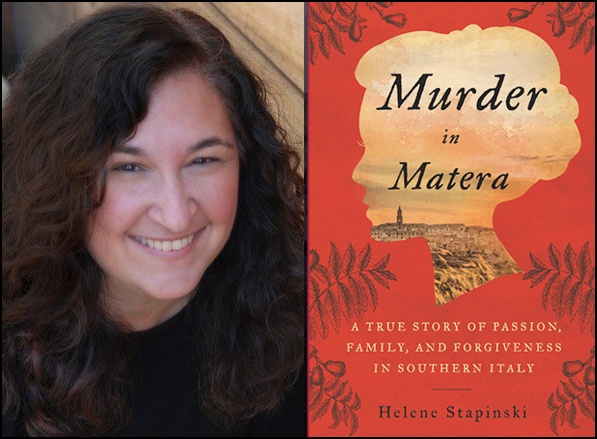
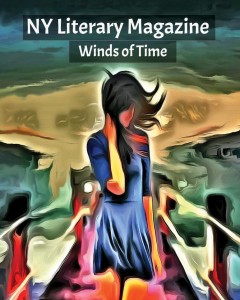
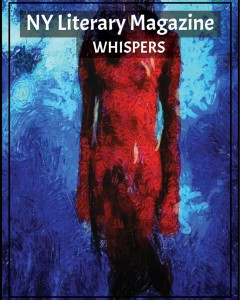
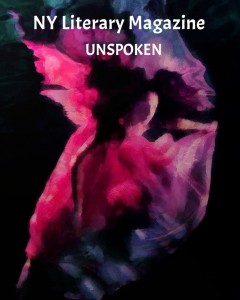
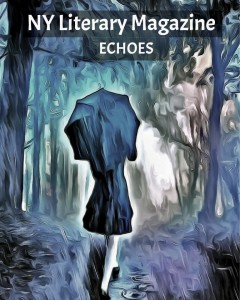
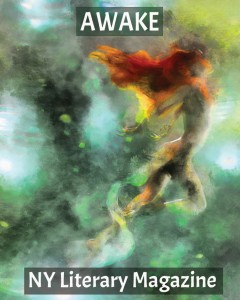

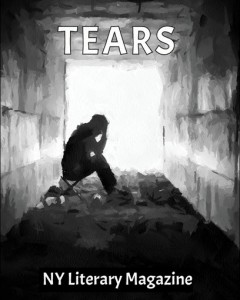
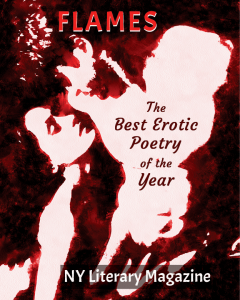

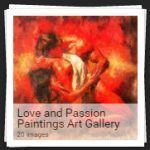
Leave a Reply
You must be logged in to post a comment.